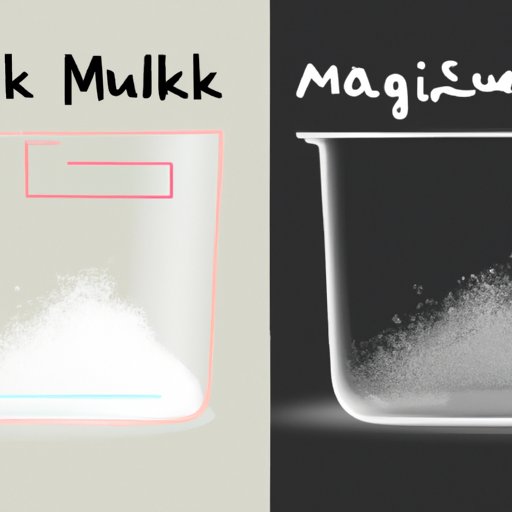
Introduction
Dissolving salt in water is a common process that most of us have come across in our daily lives. Although this process seems simple, it has left many people wondering whether it is a physical or chemical change. In this article, we will explore this controversy and try to provide an answer. Our aim is to provide a scientific explanation, conduct a chemistry experiment, use everyday analogies, compare to chemical changes, and discuss practical applications.
Scientific Explanation of Physical Change
Before we delve into whether salt dissolving in water is a physical change, let’s define physical change. According to Chemistry, physical change refers to a change in the physical properties of a substance. It does not involve changing the substance’s identity. Examples of physical change include changing the state of matter (gas, liquid, or solid) and changing the shape of an object.
When we dissolve salt in water, it undergoes a physical change. Here’s why: Salt is an ionic compound made up of positively charged sodium ions and negatively charged chloride ions. When we add salt to water, the ions break apart due to the polarity of water molecules. The negatively charged ends of the water molecules surround the positively charged sodium ions, while the positively charged ends surround the negatively charged chloride ions. This arrangement forms a solution, which is a homogeneous mixture.
Chemistry Experiment
To better understand this process, you can conduct an experiment at home. First, fill a glass with about ½ cup of room temperature water. Next, add a teaspoon of salt to the water and stir it up until the salt fully dissolves. Observe the changes that occur. You will notice that the salt disappears, and the water turns slightly cloudy at first, but within a few seconds, it becomes clear again. This process demonstrates a physical change.
Everyday Analogies
Sometimes, understanding scientific concepts can be complicated, but analogies can make it easier. When explaining why dissolving salt in water is a physical change, we can compare it to ice melting into water. When you heat ice, it turns into water, and you can’t tell the difference between the water molecules and the ice molecules. The same thing happens when you dissolve salt in water. The salt ions break apart, and you can’t distinguish between salt molecules and water molecules.
Another example of a physical change that we encounter in our daily lives is sugar dissolving in water. If you add sugar to water, the sugar crystals disappear. Instead of having sugar crystals in water, you will have sugar water, which is a homogeneous mixture.
Comparing to Chemical Changes
To better understand what a physical change is, let’s first define chemical changes. Chemical changes refer to when a substance undergoes a reaction, resulting in a new substance with different properties. Examples of chemical changes include burning wood and rusting iron.
Physical changes differ from chemical changes in that the substance’s identity remains the same during a physical change. In the case of dissolving salt in water, we are left with a homogeneous solution that still contains sodium and chloride ions, albeit in different forms. Therefore, dissolving salt in water is classified as a physical change.
Application in Daily Life
The process of dissolving salt in water has practical uses in our daily lives. For instance, when cooking, we use salt water to boil vegetables, pasta, and rice. Salt enhances the flavor of these foods and also preserves their color and texture. When we understand that this process is a physical change, we can better understand the science behind cooking. We can experiment with different concentrations of salt and observe the effects on the texture, color, and flavor of the food. Understanding physical changes can help us make better-informed decisions and result in better cooking.
Conclusion
In conclusion, dissolving salt in water is a physical change. It involves the breaking of the ionic bond between sodium and chloride ions and the formation of a homogeneous solution. Through this article, we have provided a scientific explanation, conducted a chemistry experiment, used everyday analogies, compared to chemical changes, and discussed practical applications. This understanding will help you make more informed decisions in your daily life. Think critically about the physical changes you encounter each day, and you might be surprised how science is everywhere around us.





